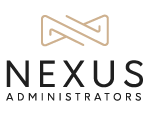Plan Types
401(K)
A 401(k) is a feature of a qualified profit-sharing plan that allows employees to contribute a portion of their wages to individual accounts.
- Elective salary deferrals are excluded from the employee’s taxable income (except for designated Roth deferrals).
- Employers can contribute to employees’ accounts.
- Distributions, including earnings, are includible in taxable income at retirement (except for qualified distributions of designated Roth accounts).
403(B)
A 403(b) plan (also called a tax-sheltered annuity or TSA plan) is a retirement plan offered by public schools and certain 501(c)(3) tax-exempt organizations. Employees save for retirement by contributing to individual accounts. Employers can also contribute to employees’ accounts.
Profit Sharing
A profit-sharing plan accepts discretionary employer contributions. There is no set amount that the law requires you to contribute. If you can afford to make some amount of contributions to the plan for a particular year, you can do so. Other years, you do not need to make contributions. Also, your business does not need profits to make contributions to a profit-sharing plan. Deductible contribution limit is 25% of eligible compensation.
ESOP's
An employee stock ownership plan (ESOP) is an IRC section 401(a) qualified defined contribution plan that is a stock bonus plan or a stock bonus/ money purchase plan. An ESOP must be designed to invest primarily in qualifying employer securities as defined by IRC section 4975(e)(8) and meet certain requirements of the Code and regulations. The IRS and Department of Labor share jurisdiction over some ESOP features.
Defined Benefit Plans
Defined benefit plans provide a fixed, pre-established benefit for employees at retirement. Employees often value the fixed benefit provided by this type of plan. On the employer side, businesses can generally contribute (and therefore deduct) more each year than in defined contribution plans. However, defined benefit plans are often more complex and, thus, more costly to establish and maintain than other types of plans.
- Can have other retirement plans
- Can be a business of any size
- Need to annually file a Form 5500 with a Schedule B
- Have an enrolled actuary determine the funding levels and sign the Schedule B
- Can’t retroactively decrease benefits
Cash Balance Plans
A cash balance plan is a defined benefit plan that defines the benefit in terms that are more characteristic of a defined contribution plan. In other words, a cash balance plan defines the promised benefit in terms of a stated account balance.

